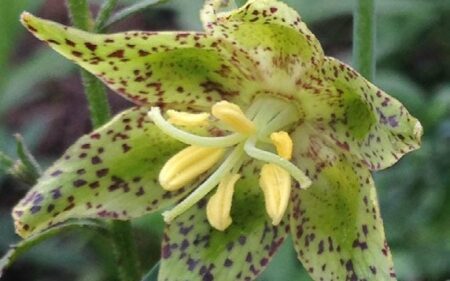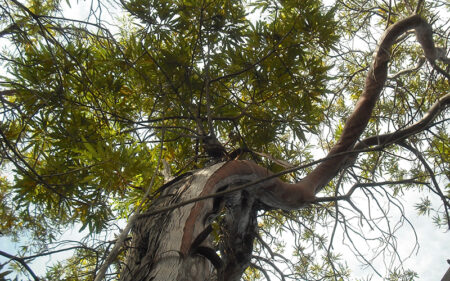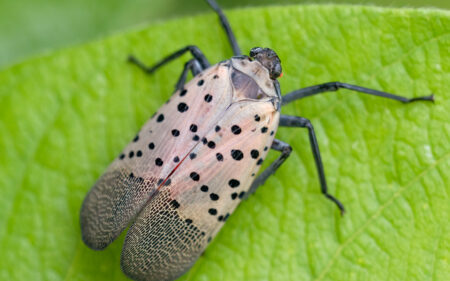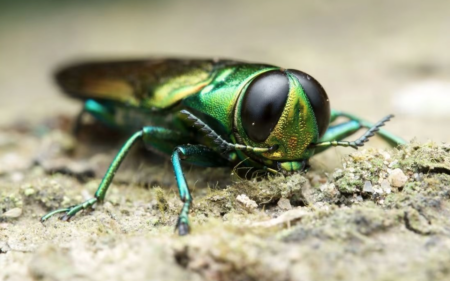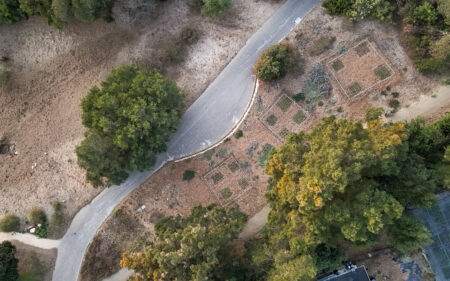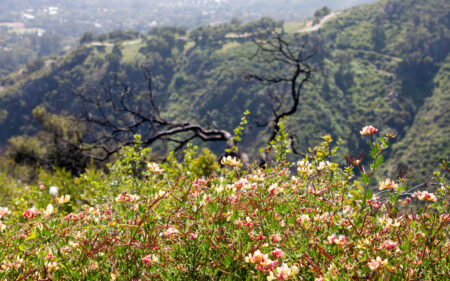Nature Educators Provide Transformative Experiences

The Santa Barbara Botanic Garden is constantly renewing its commitment to connecting people with the remarkable native flora of California and specifically the Central Coast. Mounting evidence over the last decade indicates that young people spend less time learning from the natural world, lowering overall environmental literacy and our communal sense of connection to nature. Terms such as “nature deficit disorder” and “plant blindness” are accepted as contemporary realities, but the Garden works to combat these trends with science education that is rooted in transformative experiences with native plants. This effort is particularly true of the Garden’s elementary field trip programs, which invites classes to attend a docent-led field trip to the Garden. Recently, the Garden increased its capacity to inspire young minds by providing tours for additional elementary classrooms and an upgraded plant lab that students and teachers can utilize to reveal phenomena that are often “hidden in plain sight.”
There is a great deal of evidence that youth form strong affinities with the natural world and its conservation through exploratory interaction in natural spaces and by observing adults who enjoy time in nature. With generous funding from foundations and individual donors, the Garden has launched a new Nature Educator program, which allows us to hire and train five early career professionals to be environmental educators at the Garden. This fall, the Nature Educators shared their passion for native plants and the natural world with more than 700 elementary students.
Although the Nature Educator program allows hundreds of additional elementary students to experience our living museum, they are not the only ones who benefit from this project. The Nature Educators themselves are gaining leadership skills and learning how to become natural resource professionals. All five of the Educators are either enrolled in college or recent graduates, so this opportunity represents a first look into the vast, but sometimes obscure world of natural resource careers. This program represents a perfect opportunity to build skills in life sciences and explore the career opportunities afforded by environmental education.

“I look forward to learning more about California native pants and environmental education from working at the Garden,” said Nature Educator Teagan Singer-Fredericksen. “It was something that seemed important to me and I also really look forward to making a positive impact on the students.” Teagan grew up in Carpinteria and visiting the Garden was a fixture of her childhood. This program is an opportunity to give back to a place that inspired her.
Fellow Nature Educator Rebecca Hext echoed Teagan’s excitement for building an environmentally-engaged community. She says, “I grew up in a small town that had a huge emphasis on community involvement, and I am actually still a part of many organizations there even though I moved away. Being someone that only recently has moved to Santa Barbara, I am looking forward to being more involved with this community and creating a strong sense of pride and place through my work with the Garden.”
Although environmental education programs and facilities date back to the 1960s, there is still a limited pathway for young professionals to enter environmental education as a career. Vocational programs and environmental education degrees in California are few. With the Nature Educators program, the Garden hopes to become an incubator for students, early career professionals, and those seeking to make a career change to get a foothold in this profession.

As the Nature Educator program develops, we will seek to provide more extensive training and recruit larger cohorts of Nature Educators, who in turn will be capable of providing transformative experiences for more students in the Tri-County area.
“We really want to develop something that provides a service to those who are considering working in environmental education or conservation fields,” said Michelle Cyr, the Garden’s Education Coordinator and manager of the Nature Educators program. “It wasn’t too long ago that I was in a similar position to our current Nature Educators. Fresh out of school, I had to figure out how to break into this field myself. It would have been great to participate in a program like the Nature Educators.”
For this reason, there is an emphasis on making as much training available to the Nature Educators as possible. In addition to the mandatory two-day training that outlines philosophy, curricula, safety concepts, and Garden orientation, the Nature Educators are encouraged to attend an additional six-hour Project Learning Tree (PLT) certification and the forty-hour California Naturalist program, at no cost to the Educators. In this inaugural year of the program, two of the educators opted to participate in both the PLT training and California Naturalist. This training is further supported by weekly team meetings and an open door policy to check in with any member of the Garden’s education department.
As with our recent efforts to ensure that Garden docents working with elementary students are familiar with the principles of science learning outlined in the Next Generation Science Standards (NGSS), all Nature Educator training has emphasized fluency in NGSS and inquiry-based learning. Field trips led by Nature Educators feature a tour around the Garden with an emphasis on sensory experiences and familiarization with the features of California’s native landscapes. During this part of the tour, students get the chance to explore the bark of a redwood tree, or spend considerable time with a single plant, observing its foliage, growth form, or possibly flowers. Based on the observations they make, the students are asked to devise their own name for the plant, reflecting what the student observed.
After exploring the Garden and interacting with its collections, students are invited into the Arroyo Room, which has been recently upgraded as a 21st century plant investigation lab. The Arroyo Room is equipped with twelve Zeiss dissecting microscopes and one teacher scope whose image can be broadcast onto a large screen at the front of the room. In the plant lab, students are given the opportunity to marvel at the hidden worlds of an Opuntia cactus skeleton, or the architecture of a composite flower’s disk floret. Students are encouraged to make sketches of their observations and to reflect on their experiences through writing. Following a tour led by Nature Educators, teachers are invited to bring their classes into the plant lab for further investigation.
Between the field trips led by the Nature Educators and those led by volunteer Docents, the Garden anticipates it will provide field trips for over 2,000 students this school year. And it’s only the beginning. As the Nature Educator program develops, we will seek to provide more extensive training and recruit larger cohorts of Nature Educators, who in turn will be capable of providing transformative experiences for more students in the Tri-County area. In the meantime, if you are in the Garden on a Friday morning and see a group of students wearing blindfolds, think about your formative experiences in the natural world and know that we working to give those same feelings to the next generation of land stewards.
 Donate
Donate